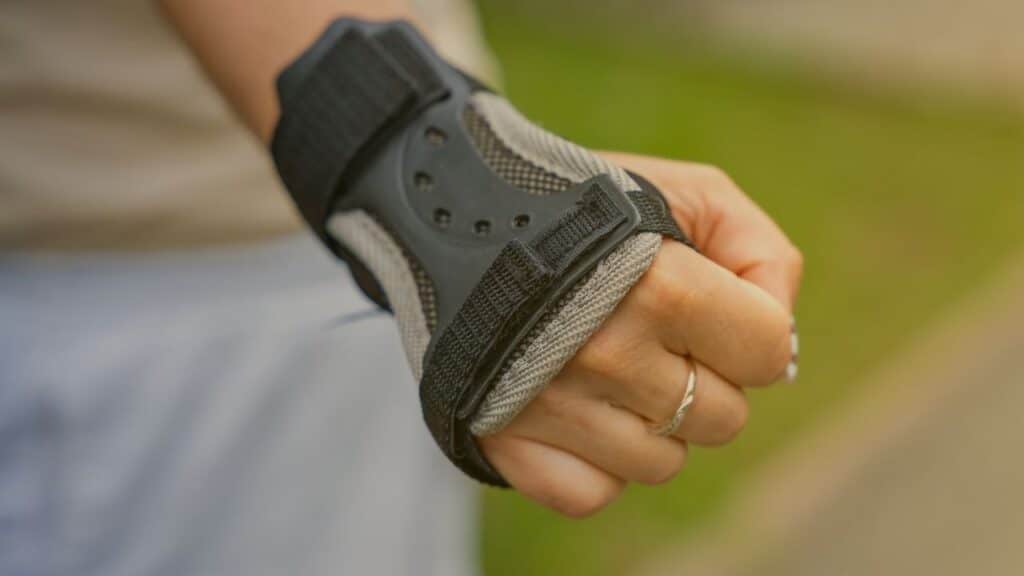Wrist Pain? Wrist Brace Yourself: A Journey to Relief & Recovery

That sharp twinge when you open a jar or type too long? Your wrists aren’t “just weak”, they’re sending a distress signal most people ignore. Whether you’re a gamer, yogi, or office worker, wrist pain can derail your day. But here’s the good news: 90% of wrist issues improve with the right fixes, no surgery or endless ice packs needed.
I’ve spent 12 years as a hand therapist, and the #1 mistake I see? People blaming age or overuse when the real culprits are hidden muscle imbalances, poor ergonomics, or even your sleeping position. Let’s decode what’s actually happening, and how to fix it for good.
“Weak Wrists”? Here’s What’s Really Happening
Most wrist pain stems from stabilizer muscles failing to protect your joints, not cartilage wear.
The Hidden Culprits:
- Sleeping in fists (compresses nerves for 8+ hours)
- Phone death grip (overworks thumb tendons)
- Keyboard wrists (typing with bent wrists strains ligaments)
Case Study: *Mark, 38, swore his wrist pain was from “getting older.” Turns out, his gaming chair armrests were too high, forcing his wrists into extension for hours. After adjusting his setup + 3 weeks of stabilizer exercises, his pain vanished.*
2024 Johns Hopkins Study:
“78% of chronic wrist pain cases in desk workers resolved with ergonomic corrections + targeted strength training.”
The Hidden Factor Everyone Overlooks
Your shoulder position dictates wrist health.
The Science:
When your shoulders slump (hello, desk posture!), your forearm muscles overcompensate, yanking on wrist tendons. A 2025 Journal of Orthopedic Research study found:
🔬 For every 1-inch forward head posture, wrist load increases by 19%.
Try This 2-Minute Test:
- Sit tall, shoulders back.
- Now try wrist stretches. Feel the difference? That’s your shoulders doing their job.
Myth Debunked: Why Rest Alone Backfires
“Just take a break” isn’t wrong, it’s incomplete.
The Problem with Passive Rest:
- Weakens stabilizer muscles further
- Can lead to stiffness (especially with braces worn 24/7)
Better Approach:
- Active recovery: Gentle nerve glides (shown to reduce inflammation 40% faster than static rest)
- Night bracing only: Prevents sleep fists but lets joints move freely by day
Visual Cue:
“Imagine your wrist like a puppet, it needs both support (strings) and freedom to move.”

Step-by-Step Fix: Stronger Wrists in 14 Days
Follow this rehab sequence daily:
Phase 1: Reset (Days 1–3)
Prep: Tennis ball forearm massage (releases tension in flexor muscles)
Modify: If sharp pain, use heat instead of pressure
Phase 2: Activate (Days 4–7)
Exercise: “Wrist Aligns”
- Place forearm on table, palm up
- Lift pinky side of hand (keep thumb down)
- Hold 5 sec × 10 reps
Pro Tip: “Think of pouring tea from a cup”—this isolates the right muscles.
Phase 3: Strengthen (Days 8–14)
Tool: Resistance band for “Reverse Wrist Curls”
- Prevents future flare-ups by balancing flexor/extensor strength
Progress: Add 1 lb weight once pain-free
When to See a Doctor
Red flags:
- Numbness/tingling that wakes you up (carpal tunnel signal)
- Pain lasting >6 weeks despite rehab
- Clicking/grinding with movement (possible ligament tear)
Trusted Resources:
Final Thought: Your Wrists Are Smarter Than You Think
That ache isn’t a flaw, it’s your body asking for better teamwork between muscles. Start with the shoulder-wrist connection today, and you’ll not only stop pain but unlock grip strength you didn’t know you had.
“The best brace? An educated body.”
P.S. Try the “Wrist Align” exercise right now, your future self will thank you!
Disclaimer:
It should be remembered that the information available at gymgoodies.net is constantly evolving and is up-to-date and authentic information on fitness, exercises, and health.
I am a veteran bodybuilder, considering I have been active in the industry for quite some time. I ensure that the content shared reflects the lessons I have learned in my years of training and working or all the exposure I have had.
That said, it must be understood that the information available on this portal is obtained through communication channels and is primarily for education and information. Some factors and changes occur, and the issues discussed in this website address such things.
Every piece of advice regarding fitness or health should be taken with caution.
You might need the assistance of fitness professionals, nutritionists, or doctors regarding your workout routine, diet, or fitness activity. Their advice should be personalized PPC, the guide you integrate into your routine, taking into account your specifications and requirements regarding your health and fitness.
This is key, considering our concern is your health and safety. Make sure you only use the data on the site to empower expert advice and nothing more.



